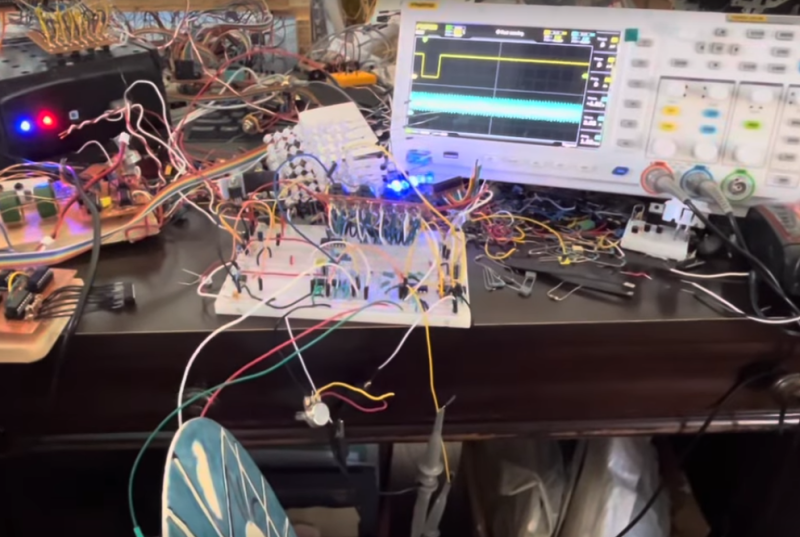It’s a well-known conundrum that while most computers these days are digital in nature, almost nothing in nature is. Most things we encounter in the real world, whether it’s temperature, time, sound, pressure, or any other measurable phenomenon comes to us in analog form. To convert these signals to something understandable by a digital converter we need an analog-to-digital converter or ADC, and [Igor] has built a unique one from scratch called a delta sigma converter.
What separates delta sigma converters apart is their high sampling rate combined with a clever way of averaging the measurements to get a very precise final value. In [Igor]’s version this average is provided by an op-amp that integrates the input signal and a feedback signal, allowing for an extremely precise digital value to be outputted at the end of the conversion process. [Igor] has built this one from scratch as well, and is using it to interface a magnetic rotary encoder to control digital audio playback.
Although he has this set up with specific hardware, he has enough detail in his video (including timing diagrams and explanations of all of the theory behind these circuits) for anyone else to build one of these for other means, and it should be easily adaptable for plenty of uses. There are plenty of different ADC topologies too, and we saw many different ones a few years ago during our op-amp challenge.
















Title mentions DAC…..
Indeed…
I’ve made the mistake to sort his videos by popularity and realized he is also a surgeon. Be warned if you are sensitive to medical gore.
simple uestions.
is possible making a better sound modem for radio transmision or not?
this dev can making clear sound than normal modem?
Low bandwidth Digital Radio sounds low quality because CODECs are intentionally low quality to preserve a fixed total bandwidth per FCC allocation and standard channel widths and frequencies. Some radios do things like logarithmic encoding in order to have greater dynamic range at the cost of linearity for the same sample bandwidth. It is simple compression, hence why it sounds like JPEG looks. Sample bandwidth is also exchanged for error correction coding because digital signals do not get static, they are all or nothing. This is a sample bandwidth-range tradeoff as total bandwidth of a channel is fixed, but you can always take away from audio quality.
Delta sigma ADC and DAC are normally for input and output, not radio frequency transmission, so they will not do anything. They are also not often used for radio physical layer as Delta Sigma sacrifices sample rate for sample.quality rather than digital correctness probability. Using for example, Delta Sigma ADCs and DACs to send and receive QAM-16384 might not have any improvement for radio on a faster implementation of QAM-4 on a flash ADC running one sample per clock. Then bear in mind that spectrum allocation via FCC costs money. Large grid QAM is more typically seen in fiber optic communication, presumably with ECC even for those relatively sterile signal environments. (Per a job post looking for transceiver design skills). I doubt they were using Delta Sigma as other ADCs and DACs are faster.
This is not a delta-sigma ADC, it’s a single slope integrating ADC.
Delta-sigma converters use higher order filters. They’re much more complicated, much more difficult to understand, and are capable of converting much higher frequencies than a single slope converter running at the same clock rate.